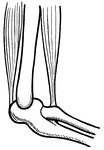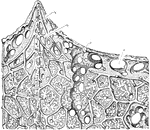
Upper Section of Sponge
An illustration of the upper portion of a sponge: p, Pore; s, Subdermal cavity; c1, chief fiver of the…
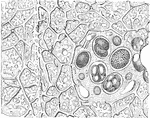
Lower Section of Sponge
An illustration of the lower portion of a sponge. O, OS, and M are illustrations of sponge eggs magnified…
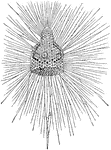
Radiolarian
A modern Radiolarian, showing the skeletal structure of silica and the extended fleshy threads or pseudopodia.

Holtenia Carpenteri
A modern sponge with silicious skeletal structure, and basal glass fibers for fixation (Holtenia…

Bones of Human Foot
"Bones of Human Foot, or Pes, the third principal segment of the hind limb, consisting of tarsus, metatarsus,…
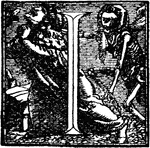
Letter I
This letter I is shown in uppercase, enclosed in a box with a background of a skeletal image running…

Letter I
This letter I is shown in uppercase, enclosed in a box with a background of a skeletal image running…
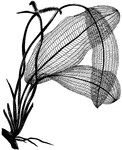
Lace-leaf Plant
An illustration of a Lace-Leaf plant also known as a Lattice Leaf or Lace Plant. The Lace-Leaf plant…
Striated Muscle
Striped, or striated, muscle which quickly contracts causing the alternating black and white lines.…

Section of Human Kidney
This illustration shows a section of a human kidney (A, Cortical substance; B, Pyramids; C, Hilum; D,…

Section of the Knee
This illustration shows a section on the knee (A, Femur; B, Tibia; C, Patella; D, Synovial sac; E, bursæ).…


